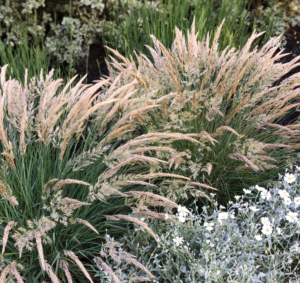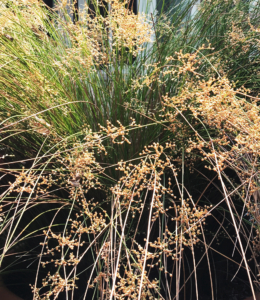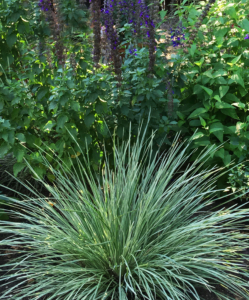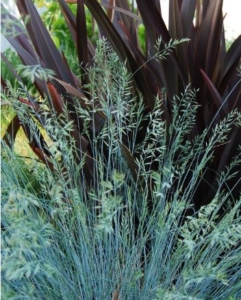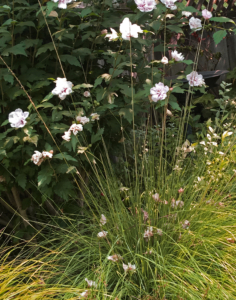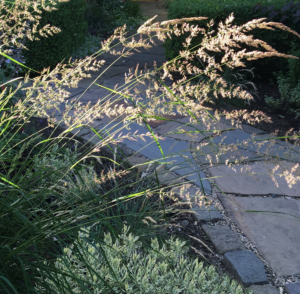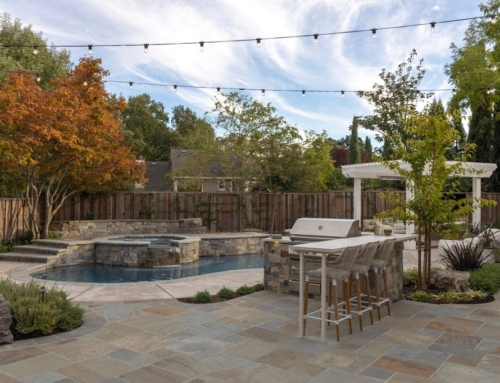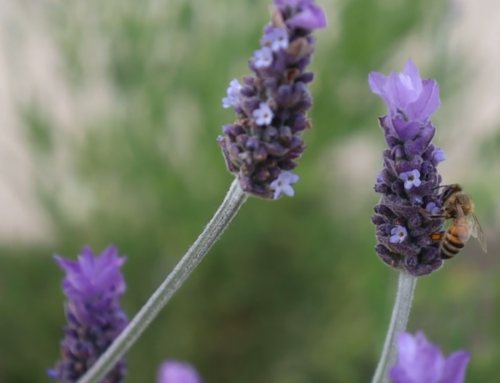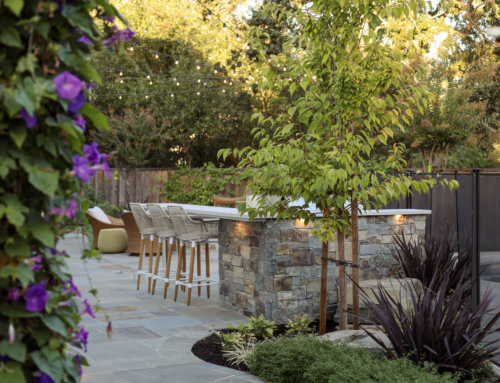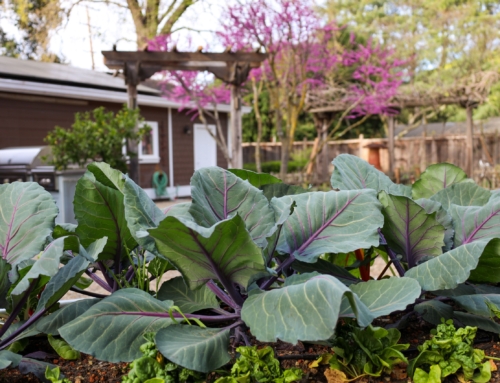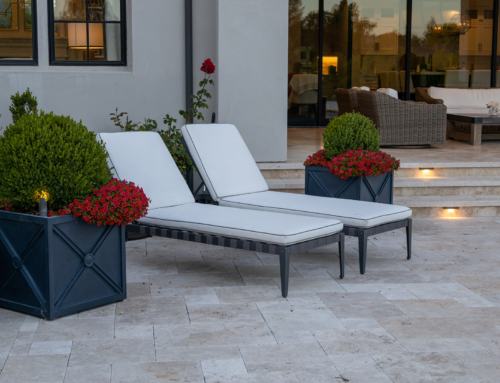Grasses in the Landscape
Ornamental grasses have stolen our hearts. The grace and movement of grasses can enliven any garden style, from the most traditional to the most contemporary. Here in California, the trend towards drought-tolerant and native-style gardening is highlighting the usefulness of grasses in our designed landscapes – their incredible variety of forms and textures make them stunning feature attractions or complements to other landscape plants. Here are just a few of the grasses we love, and a shout-out to one Grass Guru whose work has made many of these grasses available to us for the landscape.
Native Gems
In the California Bay Area, many of our native ecosystems are dominated by grasses. While some of these grasses die to the ground in the summer (a trait less desirable in the garden) others really shine throughout the hot months. The coastal Mendocino Reed Grass is a lovely compact 12 x 18 inches. With seed ‘tufts’ emerging white and turning gold, it puts on quite the show for a native grass! We love it in California/Sonoma-style plantings and sunny borders, where it offers variety when mixed in with flowering plants. Cut back in late winter for vigorous new spring growth.
Tan tufts of Mendocino Reed Grass (Calamagrostis foliosa) combine beautifully with silver and white Cerastium
Juncus (rushes) are another evergreen that offer a range of interesting foliage and flower types. From stiff upright, to gracefully curving, to the crazy curls of Juncus spiralis, they are anything but boring! Here foamy flowers of native Juncus patens spill from a pot in our studio display garden. Unlike its relatives, this rush is accustomed to dry California summers.
Formal Accents
For the formal garden, grasses can be used to accent or ground traditional garden plants, to create a feeling of lushness around the base of roses or to take the place of a hedge for a soft effect. Fountain Grasses hail from Asia and offer a wealth of different cultivars. Their fountain-like shape gives them a lush look, particularly in spring and summer. Drier-looking autumn seed tufts can be removed by a discerning gardener or allowed to develop for a natural look. Sedges (Carex) tend towards low-growing forms perfect for a formal border. Check at your local nursery for the range of available varieties.

Fountain Grass (Pennisetum) ‘Hameln’ has a lush green leaf that complements Hostas and other traditional favorites.
Lomandra ‘Platinum Beauty’ was mentioned in our May post on new plants– This variegated evergreen is endlessly versatile and combines beautifully with lush greens and these dark purple Salvia for a twist on a classical color scheme.
Contemporary Edge
As far as the contemporary garden is concerned, grasses are the new frontier! With the range of varieties and visual effects available, stunning results can be achieved with grasses alone.
Festuca glauca (Blue Fescue) is striking on its own or in combinations! Its color can lend a Southwestern look, or can compliment dark foliage and oxidized metal for a show-stopping modern effect.
For a Sonoma-style garden, grasses can create atmosphere transitioning from traditional to contemporary. Here the warm colors of Carex testacea (Orange Sedge) combine with the energetic spikes of Muhlenbergia rigens (Deer Grass) and the sweet blooms of Hardy Hibiscus.
Here at our Alamo studio, we are installing a new meadow display garden. A variety of grasses combine in this landscape, which shines year-round as native and non-native species take turns showing their stuff. We are excited to bring this new style home to our studio so our clients can get to know the grasses in person.
Grass Guru
Many of the new grasses available for the landscape are the result of the work of horticulturists and naturalists whose appreciation for native grasslands have inspired the cultivation of these grasses. Horticulturist, designer, author and ‘Grass Guru’ John Greenlee is an advocate for grasses in the landscape. His research and design inspirations have enhanced the sustainability and natural aesthetic of landscaping in California. Greenlee’s meadow gardens are comprised entirely of grasses, though some include flowering plants that float airily. Redefining the designed landscape, climate-specific meadows dramatically reduce water use (compared to traditional landscape plantings or lawn) and reconstruct habitat for native birds and animals. Meadows take skill to design correctly, but in the long-term are a low-maintenance way of taking ornamental grasses to a whole new level.
Meadow Garden by John Greenlee, author of ‘The American Meadow Garden’
Photo: John Greenlee
“For me, the draw of the meadow has to do with how meadows capture light and movement. No other group of plants can do what grasses and grass ecologies do.” – John Greenlee
We couldn’t agree more that grasses are awesome! Meadow gardens are an exciting new inspiration, and designing them requires understanding of the long-term changes that take place in a meadow ecosystem. Not every site is ideal for this type of landscape, but we look forward to the future as we enter the new frontier of grasses in the landscape.


